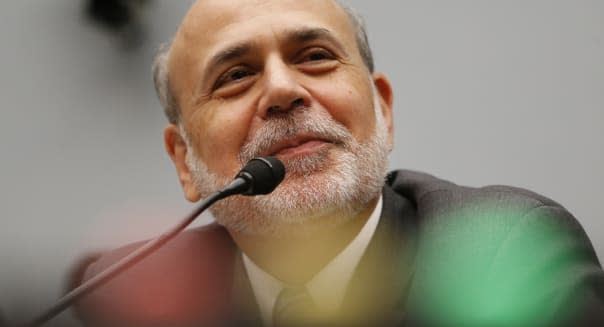Fed Sticks to Stimulus, Worried About Growth Soft Spots

By Pedro da Costa
and Alister Bull
WASHINGTON -- The U.S. Federal Reserve said Wednesday that it would continue buying bonds at an $85 billion monthly pace for now, expressing concerns that a sharp rise in borrowing costs in recent months could weigh on the economy.
The decision surprised financial markets that were braced for a reduction in the central bank's economic stimulus.
Citing strains in the economy from tight fiscal policy and higher mortgage rates, the Fed decided against a tapering of asset purchases that investors had all but priced into stock and bond markets.
"The tightening of financial conditions observed in recent months, if sustained, could slow the pace of improvement in the economy and labor market," the U.S. central bank said in a statement explaining its decision.
Stocks rallied on the Fed statement, with the S&P 500 (^GSPC) index hitting a record high. The dollar fell to a seven-month low against the euro, while prices for U.S. government bonds rose sharply.
"The economy is stabilizing but it's not growing," said Douglas Borthwick, managing director at Chapdelaine Foreign Exchange in New York. "The Fed has always said they were data-dependent and data would determine the timing of the taper. But the data that has come out over the past month hasn't been good."
In its statement, the Fed said the economy was still making progress, even in the face of tax hikes and budget cuts in Washington.
Sponsored Links
"Taking into account the extent of federal fiscal retrenchment, the committee sees the improvement in economic activity and labor market conditions since it began its asset purchase program a year ago as consistent with growing underlying strength in the broader economy," it said.
And policymakers made clear they were still mulling exactly when to ratchet back their bond-buying stimulus.
"The committee decided to await more evidence that progress will be sustained before adjusting the pace of its purchases."
Kansas City Federal Reserve Bank President Esther George again dissented, saying she was worried about financial bubbles due to the Fed's low rate policy.
The move comes against the backdrop of a somewhat gloomier outlook for economic growth from U.S. Fed officials.
In a new set of quarterly forecasts, the Fed said it now sees growth in a 2 percent to 2.3 percent range this year, down from 2.3 percent to 2.6 percent in its June estimates. The downgrade for next year was even sharper.
Most policymakers, 12 out of 17, also projected the first hike in overnight interest rates would not come until 2015, even though the forecasts suggested they would likely hit their threshold for considering a rate hike as early as next year.
The Fed reiterated that it won't start to raise rates at least until unemployment falls to 6.5 percent, so long as inflation doesn't threaten to go above 2.5 percent. The U.S. jobless rate in August was 7.3 percent.
%Gallery-187664%

